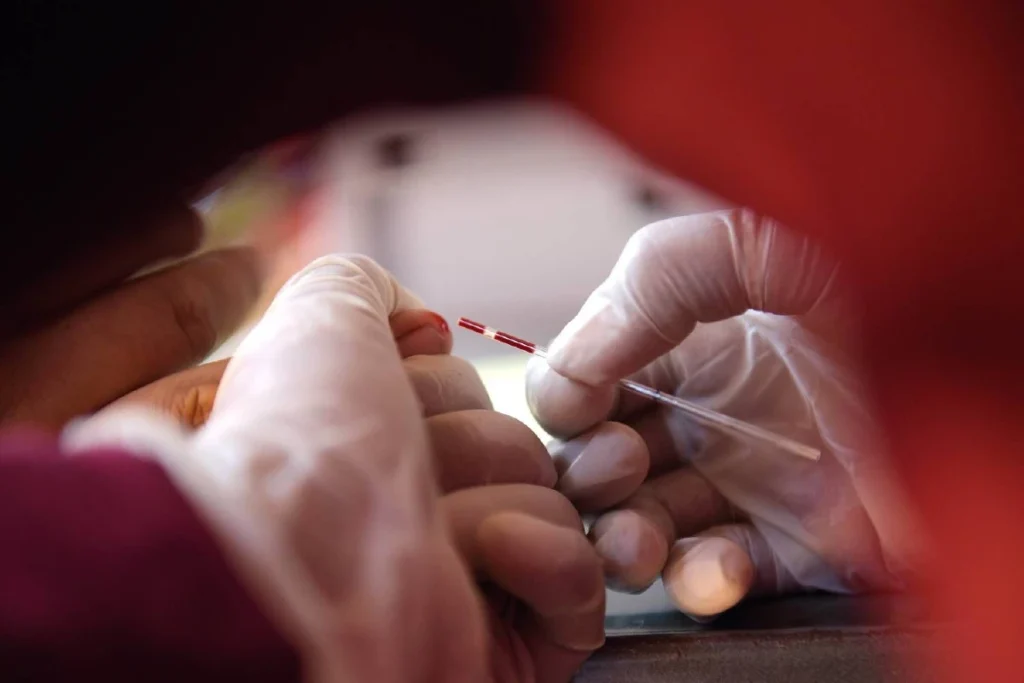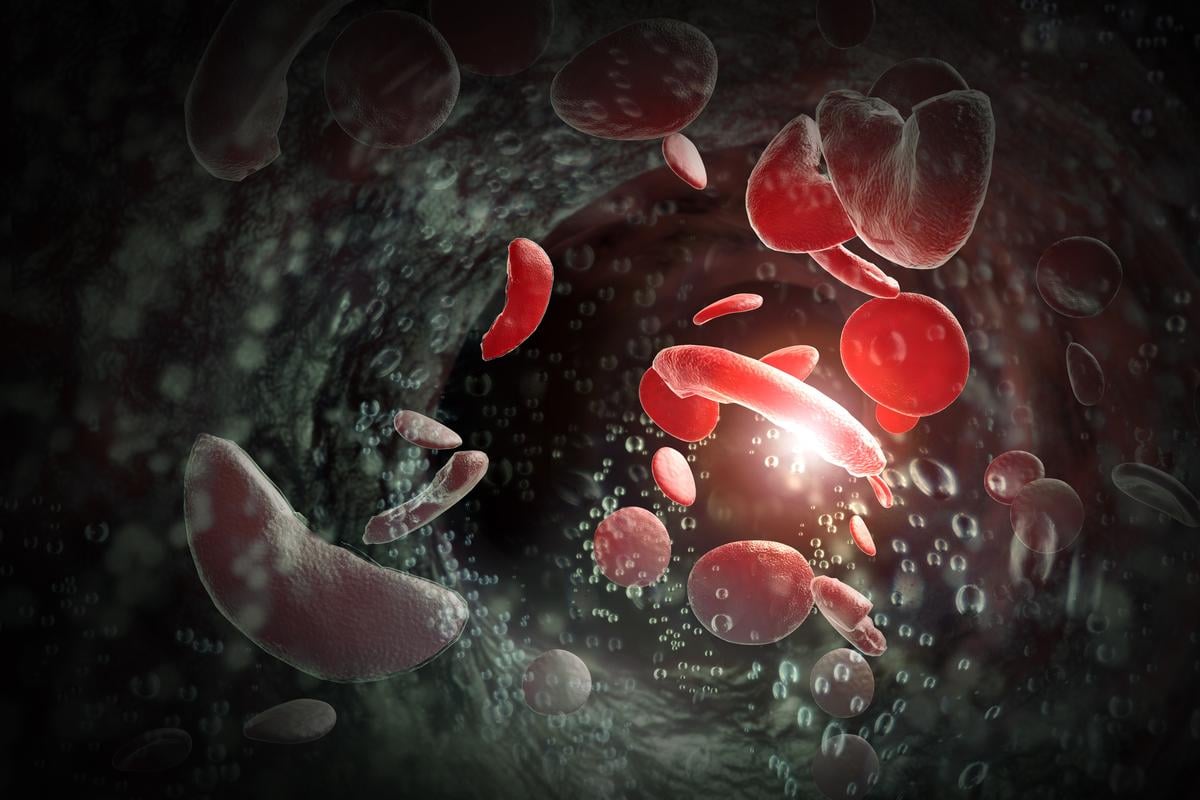
We are seeing major progress in treating sickle cell crisis. New therapies aim to stop disease progression and improve quality of life. Gene therapies like Casgevy and Lyfgenia show strong promise in ending vaso-occlusive crises.
It’s also vital to understand sickle cell disease complications. Knowing what is”and isn’t”a complication helps provide the right care. According to CDC guidelines, treatments include pain medicine, blood transfusions, Hydroxyurea, and other FDA-approved drugs.
For quick learning, many students and professionals turn to tools like a sickle cell disease quizlet, which makes studying symptoms, complications, and treatments easier.
Sickle cell disease is a genetic disorder that affects how the body makes hemoglobin. This leads to abnormal red blood cells. These cells can cause severe pain and other problems during vaso-occlusive crises.
The disease is caused by a mutation in the HBB gene. This mutation leads to the production of sickle hemoglobin or HbS. Under certain conditions, this hemoglobin can cause red blood cells to change shape.
Abnormal red blood cells are more likely to break down. They can also block small blood vessels. This can cause tissue ischemia and pain. Knowing how sickle cell disease works is key to finding effective treatments.

Vaso-occlusive crises happen when sickled red blood cells block blood vessels. This reduces blood flow to important organs. It can cause tissue ischemia, pain, and serious complications.
These crises can be triggered by infections, dehydration, or extreme temperatures. Patients with sickle cell disease often face recurring crises. Understanding what triggers these crises is vital for managing the disease.
Several factors can trigger vaso-occlusive crises in patients with sickle cell disease. These include:
Knowing and managing these triggers is important for preventing crises. Resources like sickle cell quizlet can help patients and caregivers understand the disease. They can learn what is not a complication of sickle cell disease, helping them better manage the condition.
Managing acute sickle cell crises quickly is key. This includes giving pain relief, hydration, and oxygen. Patients face severe pain, dehydration, and serious health risks. We’ll explain how healthcare providers handle these emergencies.
Pain control is vital in treating acute sickle cell crises. Aggressive pain relief is needed to help patients and prevent complications. We use several medicines, including:
It’s important to check pain levels often and adjust treatment as needed. Patient-controlled analgesia (PCA) lets patients give themselves pain medicine. This helps control pain better.
Keeping well-hydrated is key in managing acute sickle cell crises. Dehydration makes the condition worse, leading to more sickling and blockages. We suggest:
It’s important to watch fluid and electrolyte levels closely. This prevents overhydration and its risks.
Oxygen therapy is also critical in managing acute sickle cell crises. Oxygen therapy helps by:

By using pain management, hydration, and oxygen, we can manage acute sickle cell crises well. This improves patient outcomes.
Hydroxyurea is a big step forward in treating sickle cell disease. It’s a well-known drug that helps manage the disease’s complications.
Hydroxyurea boosts the production of fetal hemoglobin. This type of hemoglobin is less likely to cause sickling. It reduces the number of sickled red blood cells, lowering pain episodes and other disease complications. This is key in making the disease less severe.
Studies have shown hydroxyurea cuts down pain episodes in sickle cell disease patients. This leads to a better life quality and fewer hospital stays. It helps patients handle their condition better by reducing pain crises.
Acute chest syndrome is a dangerous complication of sickle cell disease. Hydroxyurea lowers its risk, preventing respiratory failure and other severe issues. Its role in preventing acute chest syndrome is a major plus in managing sickle cell disease.
In summary, hydroxyurea is essential for many sickle cell disease patients. It reduces pain episodes and prevents acute chest syndrome. As research grows, hydroxyurea’s importance in treating sickle cell disease will continue to be vital.
Transfusion therapies are key in managing sickle cell disease. They help prevent crises by increasing normal red blood cells. This improves oxygen delivery and reduces vaso-occlusive events.
There are two main types of blood transfusions for sickle cell disease: simple and exchange transfusions. Simple transfusions add red blood cells to boost hemoglobin and oxygen delivery. Exchange transfusions replace the patient’s red blood cells with donor ones to lower the sickled red blood cells.
Exchange transfusions are for severe cases or acute crises. They quickly reduce complication risks. Simple transfusions are for chronic management and crisis prevention.
Patients with frequent severe crises or high complication risks may need long-term transfusions. These programs keep normal hemoglobin levels and prevent crises. But, they require careful monitoring for iron overload.
Long-term transfusions can lead to iron overload. Iron chelation therapy removes excess iron. It’s given orally or through infusion and prevents heart and liver problems.
Managing iron overload means regular iron checks and adjusting therapy. Patient education is key. This ensures the safety and success of long-term transfusions.
Learning about sickle cell disease is key to managing it well. Tools like Sickle Cell Disease Quizlet are great for both patients and doctors. They help everyone understand the disease and how to manage it.
People with sickle cell disease must know their treatment options. They need to understand the value of hydration therapy, pain management, and when to get medical help. Educational tools make complex info simple, helping patients stick to their treatment plans.
Doctors also gain from these educational tools. Sickle Cell Disease Quizlet keeps them up-to-date on new treatments and care strategies. This is vital for giving the best care to patients with complex needs.
Doctors focus on several areas, including:
There are many wrong ideas about sickle cell disease and its complications. Educational tools clear up these myths. For example, some think sickle cell disease only affects certain ethnic groups or is only a childhood issue. But it can affect anyone with the sickle cell trait, at any age or ethnicity.
By teaching both patients and doctors, we can better manage sickle cell disease. This improves life quality for those living with it.
Sickle cell disease treatment is changing fast with Casgevy and Lyfgenia. These new gene therapies are showing great promise in trials. They bring hope to those affected.
The FDA and UK have approved Casgevy and Lyfgenia. This is a big step forward. It shows these treatments could really help patients with sickle cell disease.
Casgevy and Lyfgenia use CRISPR-based gene editing techniques. This method makes exact changes to the genome. It aims to fix the genetic problem behind sickle cell disease.
The process involves:
Clinical trials for Casgevy and Lyfgenia have shown impressive outcomes. They’ve seen a big drop in vaso-occlusive crises. This could change how we treat sickle cell disease.
Key findings include:
Stem cell transplantation is a new hope for those with severe sickle cell disease. It replaces the bone marrow with healthy stem cells. This could cure the disease.
Non-myeloablative haploidentical transplants are a big step forward. They use a gentler conditioning than old methods. This makes them safer for more patients.
These transplants use a donor who is a half-match. This is often a parent or sibling. It makes finding a donor easier.
Studies show a 94% two-year overall survival rate for these transplants. This is a big win for patients.
Stem cell transplants have big benefits, but they also come with risks. Graft-versus-host disease (GVHD) is a serious issue for about 10% of patients. It’s when the donated stem cells attack the patient’s body.
To lower this risk, picking the right donor and careful care after the transplant are key. New treatments for GVHD have also helped. This has made stem cell transplants more successful.
In summary, stem cell transplantation, like non-myeloablative haploidentical transplants, is a big leap in treating sickle cell disease. There are risks, but the benefits, like a high survival rate, are worth it for many patients.
We’ve looked at many treatments for sickle cell disease, from old methods to new gene therapies like Casgevy and Lyfgenia. These advances are promising. Yet, getting these treatments is hard because they’re expensive and not easy to find.
Looking ahead, we need to make treatment access better. We should work on making these new treatments available to more people. This means cutting costs and improving healthcare systems worldwide.
By tackling these issues, we can help those with sickle cell disease get the care they need. Our goal is to provide top-notch healthcare and support. We’re dedicated to making this happen.
Sickle cell disease is a genetic disorder. It affects how red blood cells are made. This causes them to break down and lead to health problems.
A vaso-occlusive crisis happens when sickled red blood cells block blood vessels. This causes pain and can damage organs.
Managing a sickle cell crisis involves pain relief, staying hydrated, and using oxygen. These steps help ease symptoms and prevent further issues.
Hydroxyurea is a treatment that helps reduce pain episodes and acute chest syndrome. It does this by increasing fetal hemoglobin production.
Blood transfusions can prevent crises by reducing sickled red blood cells. But, they can also lead to iron overload, which needs careful management.
Casgevy and Lyfgenia are gene therapies. They use CRISPR to edit genes and treat sickle cell disease. They offer a chance for a cure with good results.
Stem cell transplantation can cure sickle cell disease. It replaces the bone marrow with healthy cells. But, it also carries risks like graft-versus-host disease.
Conditions not caused by sickle cell disease, like hypertension from other reasons, are not complications of the disease.
Educational resources help by teaching about sickle cell disease treatment. They reduce misunderstandings about complications. This improves care overall.
Subscribe to our e-newsletter to stay informed about the latest innovations in the world of health and exclusive offers!
WhatsApp us